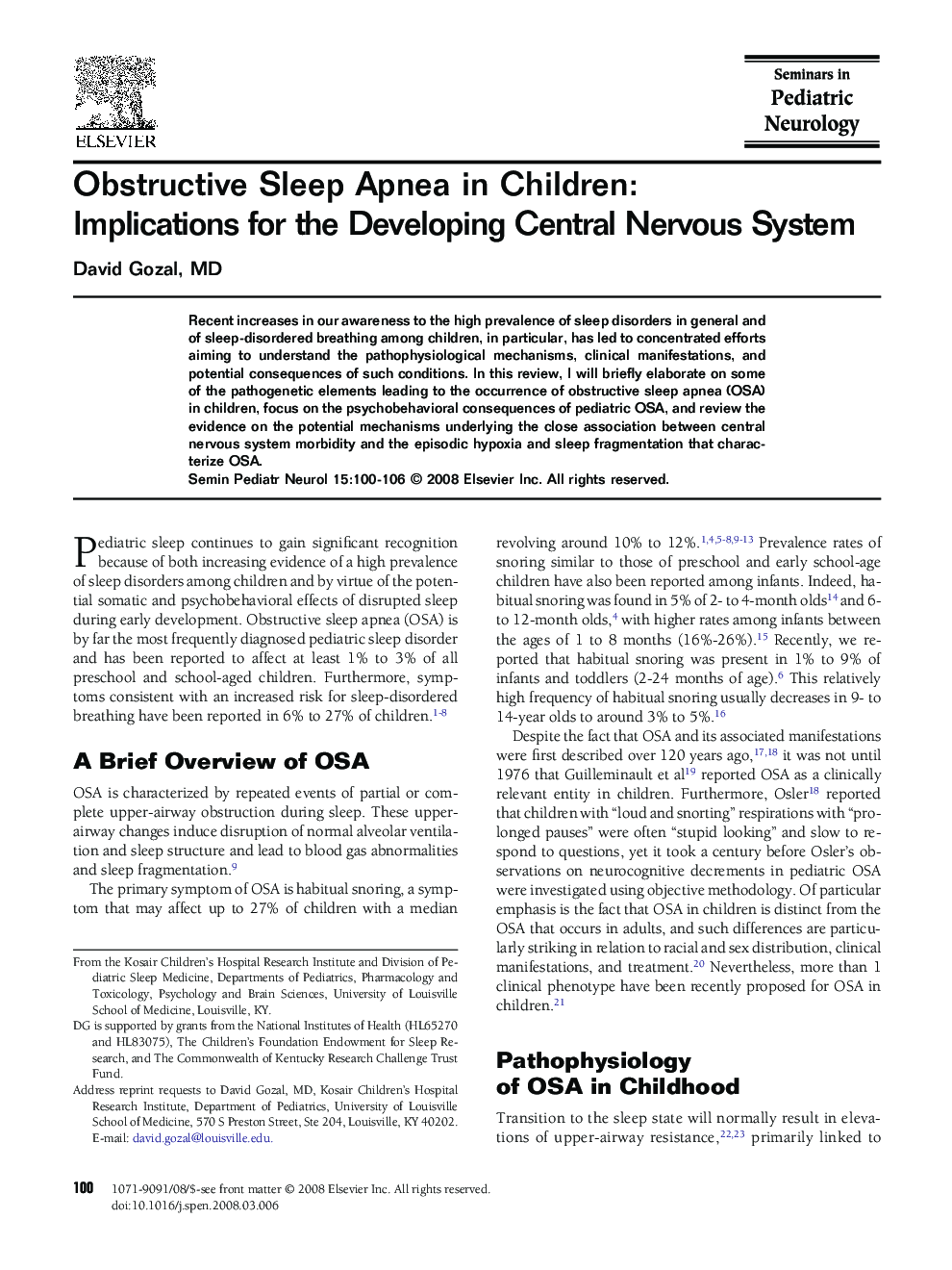| Article ID | Journal | Published Year | Pages | File Type |
|---|---|---|---|---|
| 3091171 | Seminars in Pediatric Neurology | 2008 | 7 Pages |
Abstract
Recent increases in our awareness to the high prevalence of sleep disorders in general and of sleep-disordered breathing among children, in particular, has led to concentrated efforts aiming to understand the pathophysiological mechanisms, clinical manifestations, and potential consequences of such conditions. In this review, I will briefly elaborate on some of the pathogenetic elements leading to the occurrence of obstructive sleep apnea (OSA) in children, focus on the psychobehavioral consequences of pediatric OSA, and review the evidence on the potential mechanisms underlying the close association between central nervous system morbidity and the episodic hypoxia and sleep fragmentation that characterize OSA.
Related Topics
Life Sciences
Neuroscience
Developmental Neuroscience
Authors
David Gozal,
